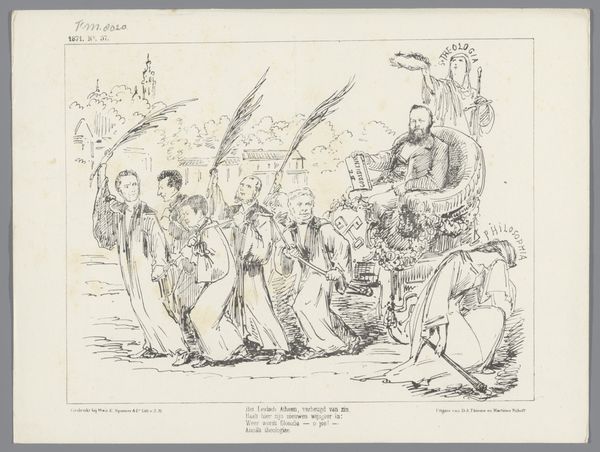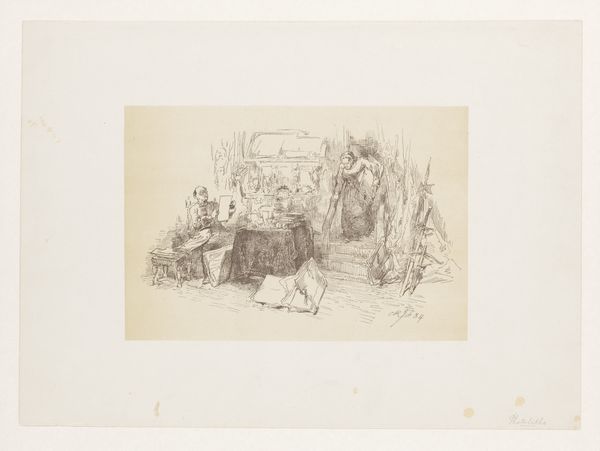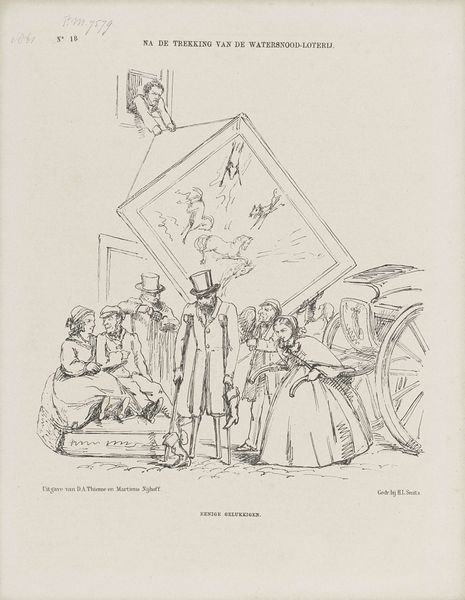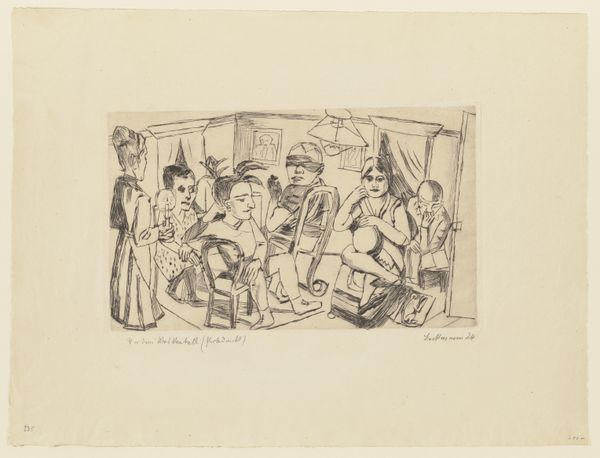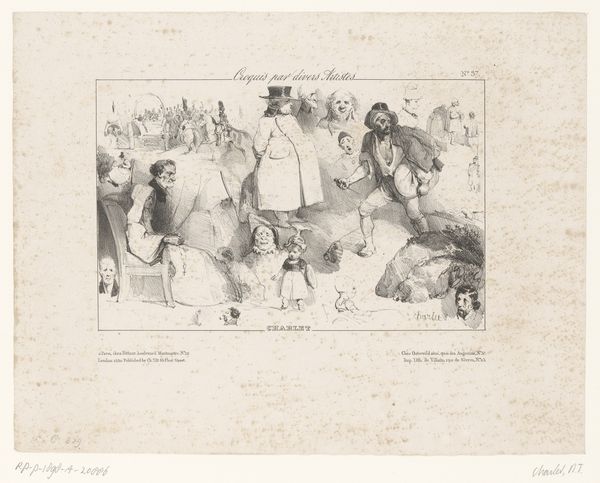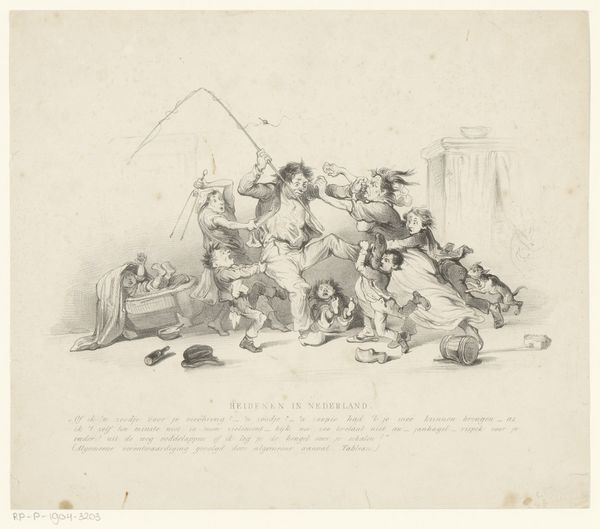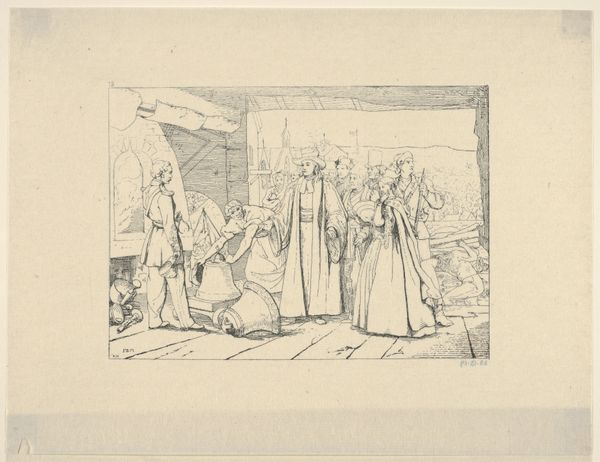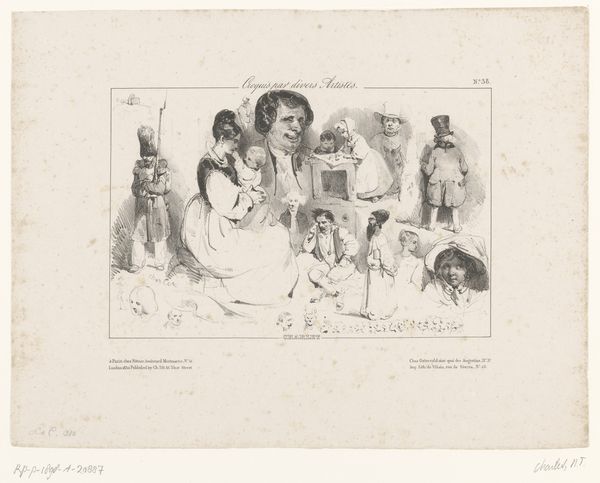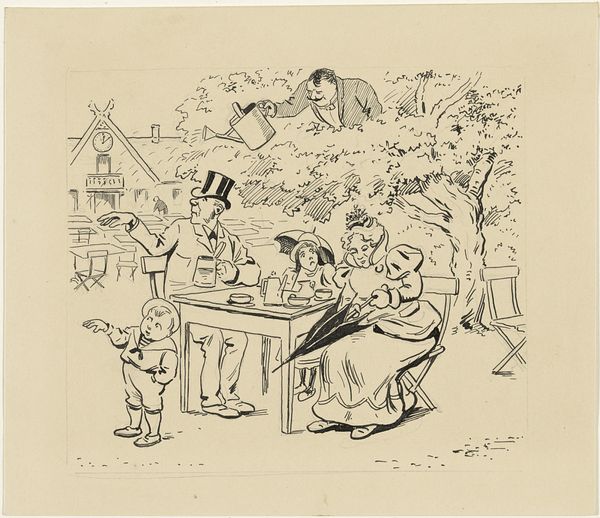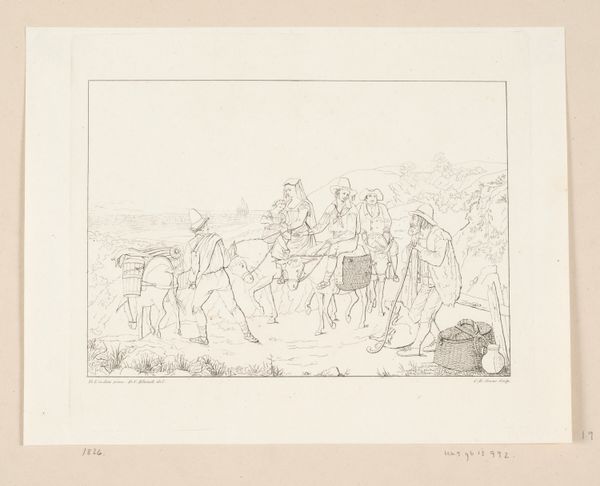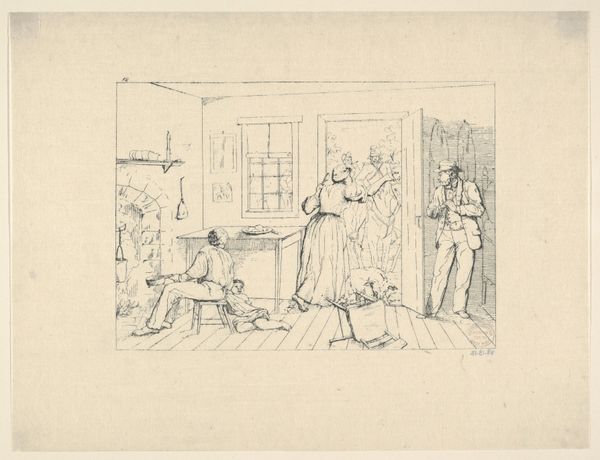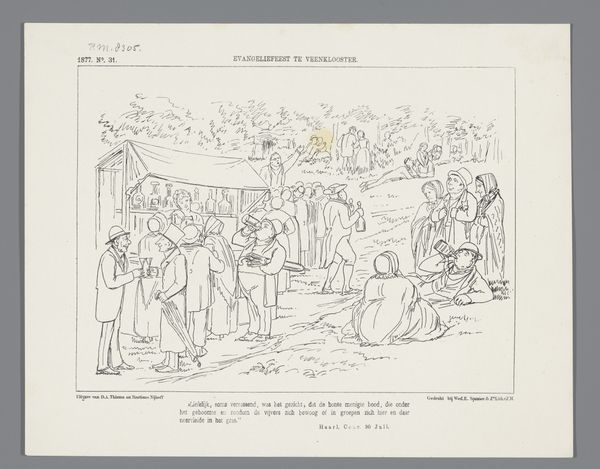
drawing, ink, pen
#
drawing
#
imaginative character sketch
#
quirky illustration
#
fantasy-art
#
cartoon sketch
#
figuration
#
personal sketchbook
#
ink
#
ink drawing experimentation
#
folk-art
#
pen-ink sketch
#
sketchbook drawing
#
pen
#
storyboard and sketchbook work
#
cartoon carciture
#
sketchbook art
Dimensions: height 213 mm, width 283 mm
Copyright: Rijks Museum: Open Domain
Editor: This drawing, “Sprookjesfiguren bekijken een ijsbeer,” or "Fairy Tale Figures Watching a Polar Bear," is by Adrie Vürtheim, created sometime between 1917 and 1970. It seems to be made with pen and ink. The image feels very whimsical and story-driven. How do you interpret this work? Curator: Well, looking at this from a materialist perspective, it’s fascinating to consider the context of its production. Vürtheim uses simple, readily available materials: pen, ink, and paper. It appears to be a sketch, a quick study. The accessibility of these materials hints at a democratic approach to artmaking, making art outside traditional academic art. How might this challenge our notion of art as being confined to specific, privileged spaces? Editor: That's interesting. I never thought of the materials in terms of accessibility. So, you’re saying the simplicity of the materials challenges traditional hierarchies? Curator: Exactly. This drawing's creation bypasses the need for expensive studios or tools. It speaks to a tradition of folk art where the value is not in the cost, but in the accessibility and story telling. Who are the expected consumers or owners of such art? Editor: Perhaps people who value storytelling and imagination over expensive materials? The image has this childlike feel; I'm drawn to its informal nature. It invites closer inspection, the materials becoming less important than the depicted scene. Curator: Precisely! The very act of sketching, using simple lines and readily available material, points to the labour invested. This shifts focus from finished product to process and invites inquiry. Ultimately, the work reveals and celebrates this history of making, pushing boundaries of high art and craft. What do you take away from understanding the piece in that context? Editor: It makes me reconsider how materials themselves can be a statement about who art is for and how it is made.
Comments
No comments
Be the first to comment and join the conversation on the ultimate creative platform.
